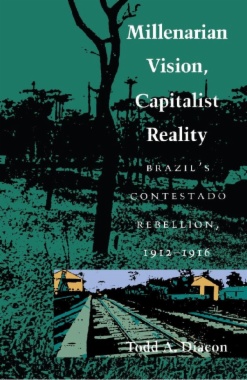Why did a millenarian movement erupt in the Brazilian interior in 1912? Setting out to answer this deceptively simple question, Todd A. Diacon delivers a fascinating account of a culture in crisis.
Combining oral history with detailed archival research, Millenarian Vision, Capitalist Reality depicts a peasant community whose security in economic, social, and religious relations was suddenly disrupted by the intrusion of international capital. Diacon shows how a “deadly triumvirate” comprised to foreign capital, state power, and local bosses engineered a land tenure revolution that threatened smallholders’ subsistence, sparking rebellion among the Contestado peasants.
Unlike most analysis of millenarian movements, Diacon combines a material analysis with a careful exploration of the movement’s millenarian ideology to demonstrate how a particular combination of external and internal forces produced a crisis of values in the Contestado society. Such a crisis, Diacon concludes, gave a special power to the millenarian vision that promised not only outward reform, but inner salvation as well. This work offers a significant contribution to the literature of millenarian movements, popular religion, peasant rebellions, and the transition to capitalism in Brazil.
- Contents
- List of Tables and Figures
- Acknowledgments
- 1 The Contestado Rebellion
- 2 The Contestado: Backwater Economy, Patriarchal Society
- 3 Capitalists and Colonists
- 4 The Deadly Triumvirate: State Power, the Brazil Railway Company, and Local Landowners in the Contestado
- 5 Progress and Anarchy
- 6 Millenarianism and the Crisis of Subsistence
- 7 Conclusion: The Power of the Millenarian Call
- Notes
- Bibliography
- Index

